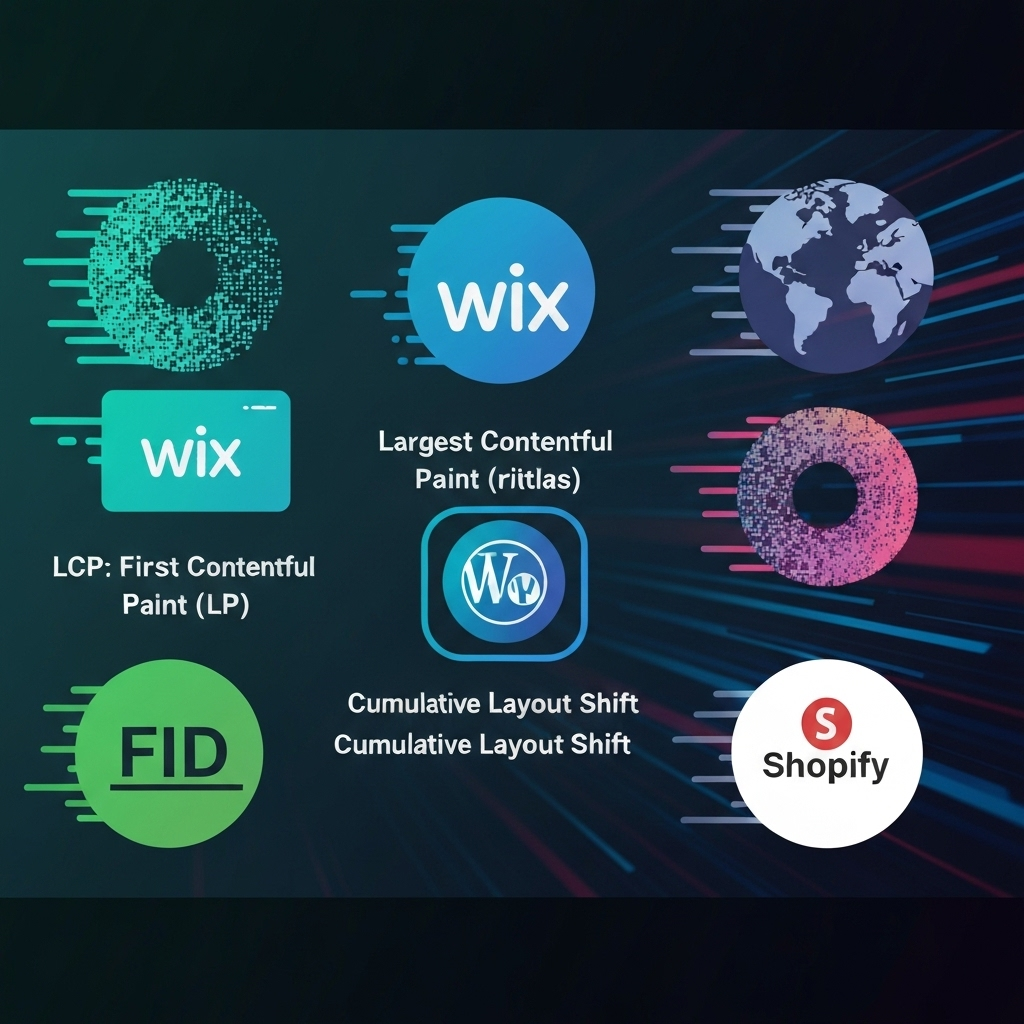The Critical Role of Website Speed in Modern SEO
In today’s fast-paced digital landscape, website speed is no longer just a luxury; it’s a fundamental pillar of online success. For businesses aiming to thrive, a slow website can be a significant deterrent, directly impacting user experience, conversion rates, and ultimately, search engine rankings. Search engines like Google prioritize fast-loading sites, recognizing that users demand instant access to information. A sluggish site leads to higher bounce rates and reduced engagement, signaling to search algorithms that your content might not be providing the best experience. This makes optimizing your website’s performance paramount for effective search engine optimization (SEO) and overall digital marketing strategy. Content creation and effective SEO copywriting are crucial for visibility, but speed ensures that once found, users stay and convert.
Demystifying Core Web Vitals: LCP, FID, and CLS Explained
Google’s Core Web Vitals are a set of specific, measurable metrics designed to quantify the real-world user experience of a webpage. These metrics focus on three key aspects of loading, interactivity, and visual stability. Understanding and optimizing for them is vital for any website, regardless of its underlying platform, including a detailed analysis of Wix vs WordPress vs Shopify Core Web Vitals performance.
- Largest Contentful Paint (LCP): Measures the time it takes for the largest content element on the screen to become visible. This is usually the main image, video, or a large block of text. A good LCP score is under 2.5 seconds.
- First Input Delay (FID): Quantifies the time from when a user first interacts with a page (e.g., clicks a button, taps a link) to the time when the browser is actually able to respond to that interaction. An ideal FID is under 100 milliseconds.
- Cumulative Layout Shift (CLS): Measures the sum total of all unexpected layout shifts that occur during the entire lifespan of the page. A low CLS score (under 0.1) indicates a stable page where content doesn’t unexpectedly jump around as it loads.
These metrics directly influence how users perceive your site’s responsiveness and stability, playing a significant role in both user satisfaction and SEO performance.
Wix vs WordPress vs Shopify Core Web Vitals: A Data-Driven Comparison
When evaluating platforms based on performance, particularly for Wix vs WordPress vs Shopify Core Web Vitals, it’s essential to consider their underlying architecture and how they handle various aspects of web delivery.
Shopify stands as a dominant force in the e-commerce space, holding approximately 26.2% of the total eCommerce platform market share, and an even higher 28.8% among the top 1 million e-commerce sites. As a fully hosted SaaS (Software as a Service) platform, Shopify manages much of the technical infrastructure, including servers, security, and core updates. This often translates to consistent baseline performance and a reduced burden on the merchant for technical optimization. Shopify’s focus on e-commerce means its core is designed for transaction speed and efficiency. Its app ecosystem, while extensive with over 7,700 apps, needs careful management, as too many unoptimized apps can negatively impact speed.
WordPress, particularly with the WooCommerce plugin for e-commerce, powers an estimated 43% of the entire internet. WooCommerce itself holds around 20.1% of the e-commerce platform market share. As an open-source CMS, WordPress offers unparalleled flexibility and customization. However, its performance heavily depends on the quality of hosting, the theme chosen, and the number and optimization of plugins. While WordPress allows for deep optimization for Core Web Vitals, it requires more technical expertise or reliance on a skilled WordPress developer and robust WordPress hosting and SEO plans. Poorly coded themes or an excessive number of unoptimized plugins can significantly hinder Core Web Vitals scores.
Wix is primarily known as a user-friendly website builder, attracting users who prioritize ease of use and rapid deployment. While historically perceived as less performant for SEO and speed compared to its counterparts, Wix has made significant strides in optimizing its platform for Core Web Vitals. It’s a closed, managed platform, similar to Shopify, which means Wix handles the server and infrastructure optimization. This can offer a predictable performance baseline. However, the level of customization and control over certain technical aspects of Core Web Vitals optimization might be more limited compared to open-source solutions. For more on Wix development, consider working with a Wix developer.
While specific Core Web Vitals scores vary widely based on individual site implementation, content, and external factors, the general trend indicates that managed platforms like Shopify and Wix often provide a more consistent baseline performance due to their optimized infrastructure. WordPress, while offering the most potential for fine-grained control and high performance, demands a more proactive approach to optimization from the site owner or their development team.
Unpacking Performance: Factors Behind CMS Speed Variations
The perceived differences in Shopify, Wix, and WordPress performance for Core Web Vitals are often rooted in several key factors:
- Hosting Environment: For self-hosted platforms like WordPress/WooCommerce, the quality of web hosting is paramount. Shared hosting can severely limit performance, whereas a dedicated server or high-quality managed WordPress hosting can significantly boost speed. Shopify and Wix, being SaaS platforms, include hosting as part of their service, abstracting this concern from the user.
- Theme and Template Optimization: A bloated or poorly coded theme, regardless of the platform, can drastically slow down a website. Lightweight, well-optimized themes are crucial for good Core Web Vitals.
- Plugins and Apps: Both WordPress and Shopify rely heavily on plugins or apps to extend functionality. Each additional plugin can add JavaScript, CSS, and HTTP requests, increasing load times. Unoptimized or excessive plugins are a common cause of poor performance across all platforms.
- Image and Media Optimization: Large, unoptimized images are one of the biggest culprits for slow websites. Proper image compression, responsive images, and lazy loading are essential practices.
- Caching: Implementing effective caching mechanisms reduces server load and speeds up page delivery. WordPress users typically rely on caching plugins, while Shopify and Wix have built-in caching solutions.
- Content Delivery Networks (CDNs): CDNs distribute website content across multiple servers globally, reducing latency for users by serving content from the closest server. All platforms can benefit from CDN integration.
Ultimately, a website’s Core Web Vitals score is a reflection of the sum of its parts, and optimizing these individual factors is key to achieving and maintaining peak performance.
Strategic Platform Choice: Balancing Performance, Scalability, and SEO
Choosing the right website platform extends beyond just comparing potential Core Web Vitals scores. A strategic decision requires balancing performance with other critical business needs like scalability, ease of use, cost, and specific functional requirements. While a platform might exhibit strong average Core Web Vitals, your specific implementation can make or break that performance.
- For businesses prioritizing maximum control, extensive customization, and a robust open-source ecosystem, WordPress (and WooCommerce for e-commerce) offers unparalleled flexibility. However, achieving optimal Core Web Vitals here demands a proactive approach to theme selection, plugin management, and server-side optimization.
- For those seeking a more managed, all-in-one solution with streamlined e-commerce capabilities, Shopify is an excellent choice. Its SaaS model generally ensures a solid performance baseline, allowing businesses to focus more on sales and less on technical upkeep. Considerations for Shopify hosting and maintenance are still important, even with a managed platform.
- Wix appeals to users who prioritize ease of use and visual design with minimal technical overhead. While offering less deep customization, its continuous platform improvements aim to provide competitive Core Web Vitals performance for its target audience. Idea Forge Studios also offers Wix hosting and SEO solutions to ensure optimal performance.
Each platform has its strengths and weaknesses, and the “best” choice is highly subjective to a business’s unique resources, technical expertise, and growth trajectory. Factors like your budget for Shopify design pricing or Squarespace hosting and SEO also play a significant role.
Continuous Optimization: Maintaining Peak Performance and User Experience
Achieving excellent Core Web Vitals and sustained website performance is not a one-time task; it’s an ongoing commitment. The digital landscape, search engine algorithms, and user expectations are constantly evolving, necessitating continuous optimization efforts. Regular maintenance, platform updates, and content reviews are crucial for ensuring your website remains fast, secure, and user-friendly. This includes keeping themes and plugins updated, regularly auditing for performance bottlenecks, and optimizing new content.
For example, effective blogging and content creation, coupled with strong copywriting practices, can contribute to both user engagement and Core Web Vitals by ensuring efficient loading of text and relevant media. Partnering with web development and SEO specialists, such as Idea Forge Studios, can provide the expert insight and consistent effort required to maintain peak performance across any CMS platform, from WordPress to Shopify or Wix. Continuous monitoring and a proactive approach ensure that your site not only meets but exceeds user expectations, contributing to long-term SEO success and a superior online presence.
Have more questions or want to get in touch? Visit our Contact Us page. We look forward to hearing from you.








Get Social